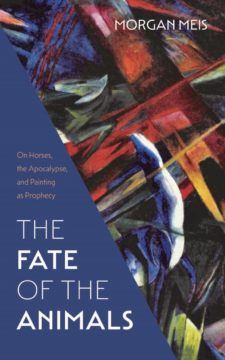George Dardess at Slant Books:
 Meis employed his dis- or un-layering style first in The Drunken Silenus: On Gods, Goats, and the Cracks in Reality.There Meis used Peter Paul Rubens’s 1620 painting, “The Drunken Silenus,” to expose the thinness of the membrane that separates mortality from immortality. Meis probes that membrane again in this second book, The Fate of the Animals. Here, he chooses Franz Marc’s 1913 painting, “The Fate of the Animals,” as a source for revealing or at least giving us a glimpse of the coming-into and going-out-of existence of all beings, including our own transient selves.
Meis employed his dis- or un-layering style first in The Drunken Silenus: On Gods, Goats, and the Cracks in Reality.There Meis used Peter Paul Rubens’s 1620 painting, “The Drunken Silenus,” to expose the thinness of the membrane that separates mortality from immortality. Meis probes that membrane again in this second book, The Fate of the Animals. Here, he chooses Franz Marc’s 1913 painting, “The Fate of the Animals,” as a source for revealing or at least giving us a glimpse of the coming-into and going-out-of existence of all beings, including our own transient selves.
Does Meis’s project strike you as a crazily ambitious, crazily quirky? Two short books (both fewer than 200 pages), each focused on only one painting, one by an acknowledged master (Rubens), one by a painter I admit I had never heard of (Marc). The painters themselves unconnected by genre, historical setting, or personal or professional interests. Yet both painters’ works are treated as if equally endowed by their capacity to change our lives.
More here.
